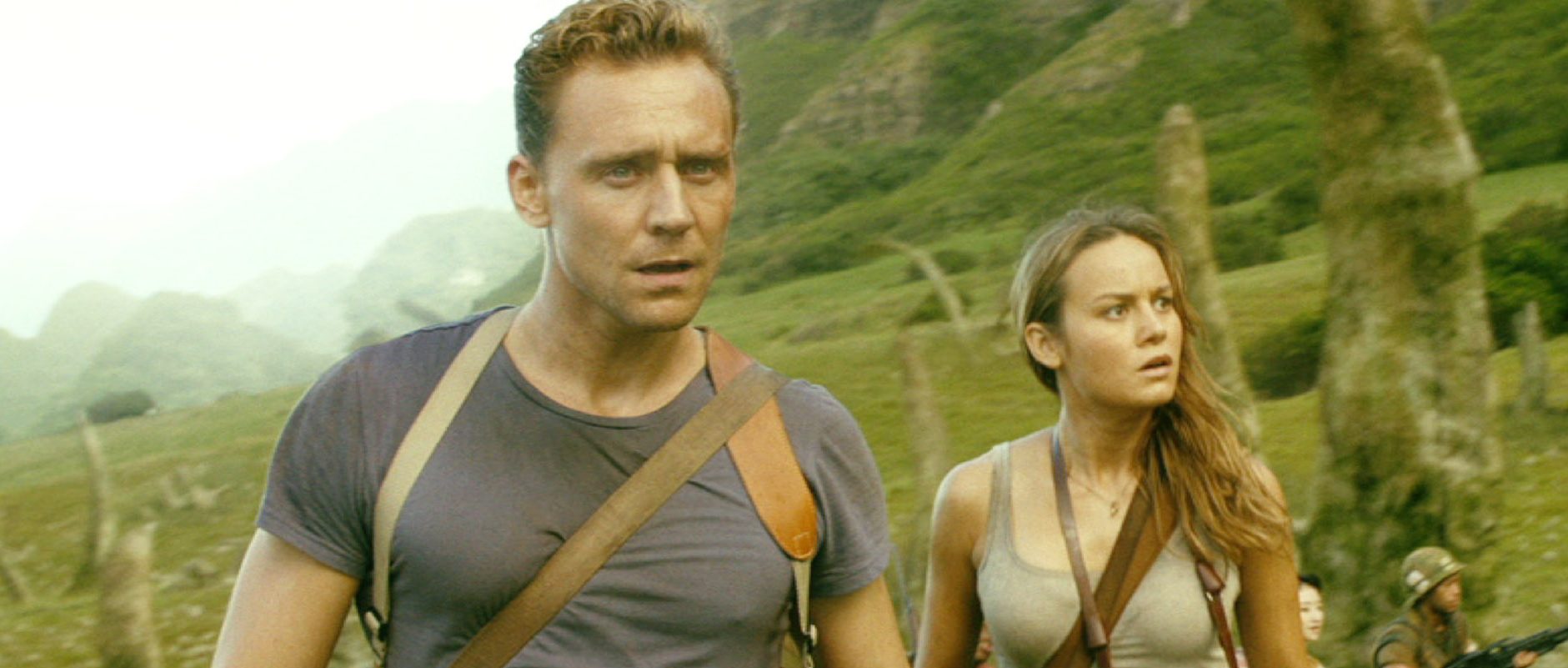Review: 'Kong: Skull Island' is a Visual and Comedic Spectacle

John Allegretti ’17/ Emertainment Monthly Staff Writer
2014’s Godzilla was a flawed film, a movie that focused more on iconography than character. The giant monster movies by Legendary Pictures seem to be obsessed with the same thing, so it’s a relief a director like Jordan Vogt-Roberts was tapped to direct Kong: Skull Island. The latest interpretation of the King Kong classic follows Bill Randa (John Goodman), a monster expert who gets government support to survey a mysterious island in the Pacific. Nicknamed “Skull Island”, the location has been shrouded in storms since the dawn of time and has only just been discovered through satellite images. The film is set in 1973, and takes a lot of visual cues from the ’79 Vietnam epic Apocalypse Now (half the age of the 1933 Kong). An airborne helicopter unit led by Preston Packard (Samuel L. Jackson) escorts Randa and his team through the storm systems and onto Skull Island. Also along for the ride is Conrad, an ex-British Special Forces member (Tom Hiddleston), and Mason Weaver (Brie Larson), a wartime photographer who butts heads with Packard’s gung-ho attitude to conflict. But when explosives are used to map geology, Randa angers the chief resident of the island: Kong. The director, Jordan Vogt-Roberts, whose background comes from character and comedy has taken the leap from a small movie about man vs. nature (2013’s The Kings of Summer) to a $180 million blockbuster with the same themes.
The marketing has pushed the Apocalypse Now homages, but Kong also references films like Princess Mononoke. One of the movie’s big themes is the balance of nature, and Kong draws on Miyazaki for its creatures and Skull Island natives. Previous Kong films have envisioned the island natives as racist stereotypes (especially the ’05 film), but this latest iteration takes a progressive and interesting approach. The design of the native’s culture makes them feel like an actual Polynesian tribe that could exist somewhere in the Pacific. Instead of living in abandoned stone structures, the natives have constructed an elaborate wooden fortress to keep out monsters more deadly than gigantic apes. Kong is shown to be the last of his species, the rest wiped out by horrifying lizard-like creatures that live beneath the island. Dubbed “Skull Crawlers” by a World War II soldier (John C. Reilly) who crash-landed on the island in the 40s, the monsters are kept in check by Kong. This turns into a problem when Packard sets out to destroy the giant ape for killing his men. The final showdown between Jackson and Kong is the stuff of legend, and borrows heavily from Predator, another man vs. monster movie. Heart of Darkness is also referenced in two of the character names (Hiddleston is named Conrad, after the book’s author and C. Riley is Marlow, the story’s main character). All of these references to other films may seem overwhelming, but work for Skull Island’s story and themes.

While most of the characters of Skull Island are well-developed, some are flat or just plain unnecessary. John Goodman always plays his character as crazy, making it hard to take him seriously or develop an emotional connection. Brie Larson is sadly underdeveloped, there’s really nothing to her character apart from being a photographer. Hiddleston is also given a character that doesn’t stand up to his acting abilities. But the most surprising underdevelopment seems to be King Kong. Kong doesn’t get a ton of scenes to himself, and maybe it’s because the filmmakers assumed the audience would just get his character from previous films. But every iteration of Kong is vastly different in psychology, and this new film ends up with one that falls on the forgettable side.
Skull Island has spectacular visuals but always backs them up with emotion. Whereas a film like Godzilla was just concerned with iconography, Vogt-Roberts and screenwriter Dan Gilroy strive for characters just as interesting as the chief monster (sometimes more-so in this case). The film doesn’t try to recreate the ’33 Kong, but goes in a new direction by drawing on other classic films a bit younger than the original monster classic. Besides being the comic relief, John C. Reilly is also the emotional core of the film and bookends the movie with a great scene (be sure to stick around after the credits, though). The movie equally succeeds in being funny and tense, which may not have been the case had Vogt-Roberts chose not to sign on. Kong: Skull Island may come up short in a few places, but is a welcome entry into Legendary’s monster franchise.
Overall Grade: B-
Watch The Trailer: [embedyt] http://www.youtube.com/watch?v=44LdLqgOpjo[/embedyt]
Looks like a great movie.